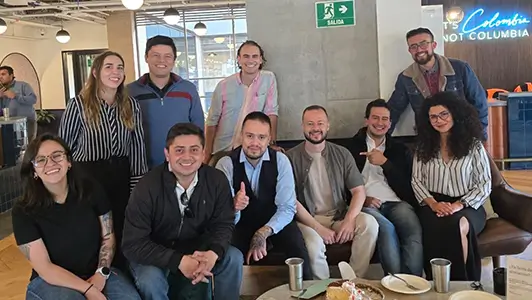Every company wants to adopt emerging technology in the hopes that it’ll crush the competition. Sure, the benefits of disruptive technology are numerous. But what does disruption really mean in business? How (and when) should companies adopt a disruptive mindset in order to reach their goals?
Getting clear on purpose
Most leaders think about disruption defensively — as a threat to the status quo or a challenge to businesses, teams, and even jobs. It also causes a sense of uncertainty, which prompts questions about whether companies can recognize and quickly adapt to changes, such as new customer needs.
Leaders might even view disruption as an omen of their business’s impending collapse — a scenario that seems all the more likely considering the current growth of artificial intelligence, cloud technology, data science, and virtual and augmented reality. In fact, only 37% of human resources leaders felt their organizations were truly equipped for future shifts.
However, leaders have the power to embrace disruption, and this is especially true when their own processes are ripe for change. This is a healthy way to address market relevance, customer pain points, and operational inefficiencies, and a growth mindset allows companies to adapt swiftly to ever-evolving conditions. In a world in constant flux, those that fail to prioritize disruption are left behind.
Three ways to foster a disruptive mindset
Simply challenging the status quo is a great exercise for determining whether workflows are truly optimized. Creating a bigger vision of what things could be — and always pushing for improvement — can help almost any company maintain its competitive advantage. However, because the nature of disruption involves unpredictability and unconventional thinking, it can still be challenging to understand how to best approach or encourage it within a company.
Here are three ways business leaders can identify whether it’s the right time to disrupt and employ that thinking to add value:
Embrace change
Ray Kurzweil’s law of accelerating returns describes how innovation allows not only for increased capability but also a boost in the rate of innovation itself. That’s the reality, so savvy leaders should expect chaos and disruption to actually be a healthy part of their companies’ natural progression. In this view, disruption is the status quo.
Make sure that everyone in the organization is on board with this concept of the marketplace. One great way to do this is to encourage free discussions. Consider hosting town hall-style meetings where anyone, at any level of the organization, can freely challenge ongoing processes, address pain points, or suggest fresher approaches.
Iteration is key
Adopting a disruptive mindset doesn’t need to be a cataclysmic event. Instead, it’s best to use an iterative approach where people are free to continually raise and evaluate ideas. When an idea is deemed viable, the organization can adopt it and add a new capability to its repertoire. That’s transformation done right.
This kind of approach has created successes such as Agile software development and Six Sigma and for good reason. Starting from scratch at the point of disruption often means reinventing the wheel, but current operations already have features that work well. Iterating, on the other hand, allows companies to retain what’s working while integrating new ideas on a trial basis.
Stay nimble and creative
Keeping organizations flexible and able to pivot is essential to taking advantage of emerging technology. Doing so challenges workers and creates opportunities for them to develop their skill sets. When technology automates tedious tasks, employees have the freedom to shift focus toward other areas. This is often more profitable for the organization and is generally more engaging for employees.
This kind of innovative thinking can truly unleash an organization’s creative power. And with that explorative streak, they’ll be able to map out new processes, product lines, and revenue streams. All of this stems from leadership’s decisions — as long as leaders are committed to doing what it takes to achieve transformation.
Disruptive innovation in business isn’t a problem when it’s viewed as an opportunity. Business leaders who ingrain this in the way their companies work will be ready to take on a complex yet promising marketplace. Start now with these basic approaches, then dive into the whirlpool. Challenge teams, expand the way employees think about the company, and accelerate confidently toward the future.


















